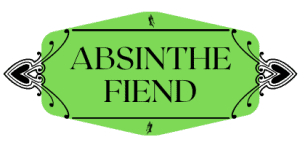If you’re an absinthe enthusiast, you know that not all absinthes are created equal. The quality of absinthe can vary greatly depending on the ingredients, production methods, and distillation process.
Unfortunately, some low-quality absinthes are marketed as high-quality, making it difficult for consumers to know what they’re getting.
In this article, we’re covering the eight key red flags that an absinthe is low quality, so you can make an informed decision when selecting your next bottle.
Red Flag #1: Artificial Coloring
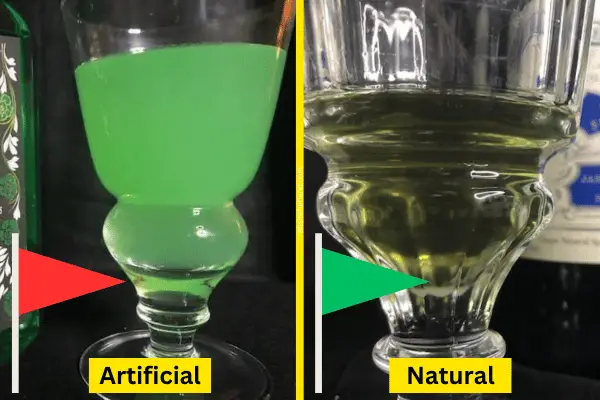
Artificial coloring is a warning sign that an absinthe is of low quality. Regular readers will know that this one tends to get me especially fired up…
Authentic absinthe verte is naturally green in color, due to the chlorophyll extracted from the herbs used in the distillation process. However, some manufacturers add artificial coloring to their absinthe to make it appear greener or to create different colors altogether.
While some absinthe drinkers may like the novelty of a brightly colored drink, it is important to note that artificial coloring is often a sign of a poor quality absinthe.
In fact, I have yet to find a single absinthe that uses artificial coloring and is still decently enjoyable.
This is because authentic absinthe is made from a combination of herbs that naturally produce a green color, and adding artificial coloring can mask the true flavor and quality of the absinthe.
Additionally, some artificial colors used in absinthe have been linked to health concerns.
For example, FD&C Red No. 40 is a commonly used red dye that has been associated with hyperactivity in children and allergic reactions in some people.
To avoid low-quality absinthe with artificial coloring, look for absinthe that is naturally green in color and is purchased from a reputable source.
Red Flag #2: Low Price
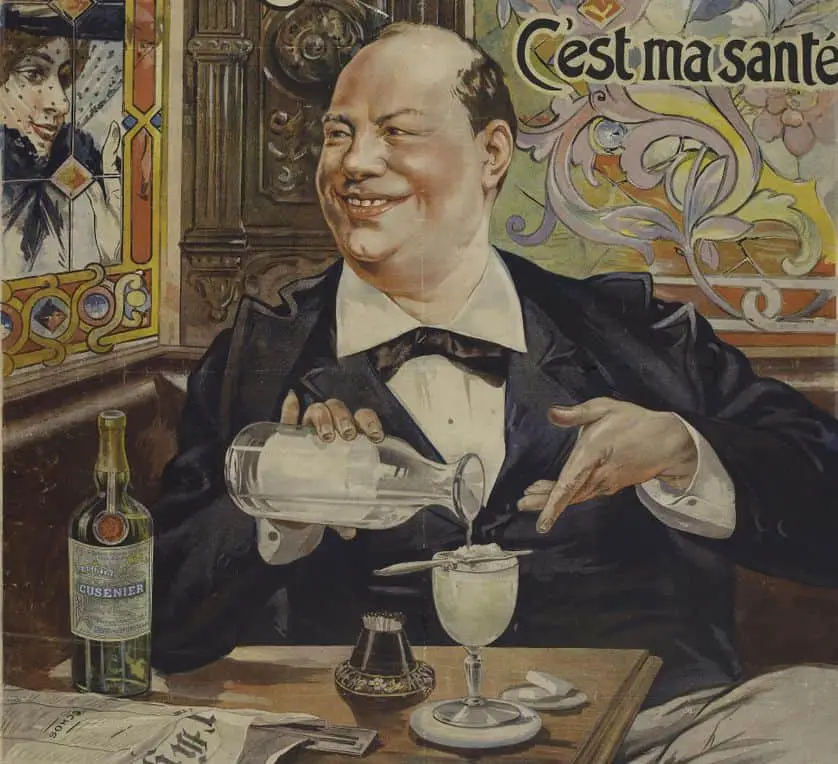
One of the most common warning signs of low-quality absinthe is a low price. While it may be tempting to go for the cheapest option, it’s important to remember that you usually do get what you pay for.
Absinthe is a complex and delicate spirit that requires high-quality ingredients and careful distillation to produce a smooth and flavorful final product. Not to mention the delicate craft and countless hours of experimentation that goes into knowing how to produce such a product in the first place!
Because of that, a low price may indicate that the manufacturer has cut corners in one or more of these areas, resulting in an inferior product.
When shopping for absinthe, be wary of prices that seem too good to be true.
While you don’t necessarily need to break the bank to find a good quality absinthe, prices that are significantly lower than average should be viewed with suspicion.
Additionally, keep in mind that the cost of producing absinthe is relatively high due to the specialized equipment and labor-intensive process required.
If a bottle of absinthe is priced significantly lower than other brands, it may be an indication that the manufacturer has skimped on ingredients or production methods to cut costs.
Related: Why Is Absinthe Expensive? (It’s Actually Not!)
Red Flag #3: Cheap or Gimmicky Packaging

One of the warning signs that an absinthe is low quality is cheap or gimmicky packaging.
If the bottle looks like it was primarily designed to catch your eye rather than protect the contents, it may be a sign that the manufacturer is more interested in marketing than quality.
Some low-quality absinthe manufacturers try to make up for their lack of quality by using flashy or gimmicky packaging. They may use bright colors, flashy labels, or unusual bottle shapes to try to stand out on store shelves.
However, these tactics are often used to distract from the fact that the contents of the bottle are of low quality.
In addition, cheap or gimmicky packaging may be a sign that the manufacturer is cutting corners in other areas as well.
If they are not willing to invest in quality packaging, they may also be cutting corners in the production process. This can result in a lower quality absinthe that does not live up to your expectations.
There’s a certain dark mystery to absinthe that is fun to play up. I mean, just look at the name of this site!
But brands that lean too heavily into gimmicky packaging and marketing while playing up the myths of the Green Fairy often boast a lot of style with very little substance to back it up.
This is sometimes done well which means that this red flag doesn’t always apply. However, more often than not it does.
When shopping for absinthe, it is important to focus on the quality of the contents rather than the packaging.
Look for absinthe that comes in a sturdy, well-designed bottle that is designed to protect the contents. This is a sign that the manufacturer is focused on quality rather than marketing.
Red Flag #4: Low Alcohol Content
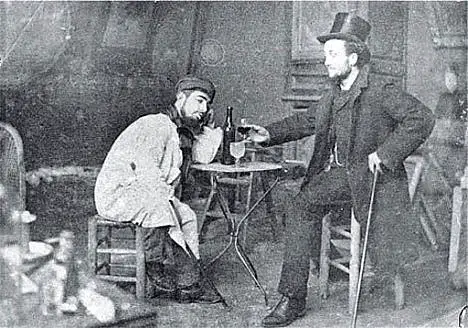
One of the warning signs that an absinthe is of low quality is its low alcohol content.
Absinthe is traditionally bottled at a very high proof, typically between 90 and 148 proof (45-74% ABV). If the absinthe you are considering has a lower alcohol content than this range, it may be a sign that the distiller has cut corners in the production process.
This was especially common in the early days following the lift of the absinthe ban in the US. Shelves had tons of “real absinthes” that were realistically just anise-flavored vodkas.
These also often used artificial coloring and certainly didn’t louche (because they weren’t even absinthe), but the comparably low alcohol content was most certainly a major giveaway when looking at the bottle.
It was a nightmare!
A low alcohol content in absinthe can result from a variety of factors, including the use of low-quality ingredients, inadequate distillation, or dilution with water.
When ingredients are of poor quality, the resulting product may not have enough alcohol content to properly extract the flavors and aromas from the herbs and spices used in the recipe.
Inadequate distillation can also lead to a low alcohol content in absinthe.
During the distillation process, alcohol is separated from water and other impurities. If the distillation is not done properly, the resulting absinthe may have a lower alcohol content than intended.
Finally, some producers may dilute their absinthe with water to increase their yield. This practice can result in a lower alcohol content and a less flavorful product.
Recommended: Absinthe’s ABV and Why It’s So Strong
Red Flag #5: Added Sugars
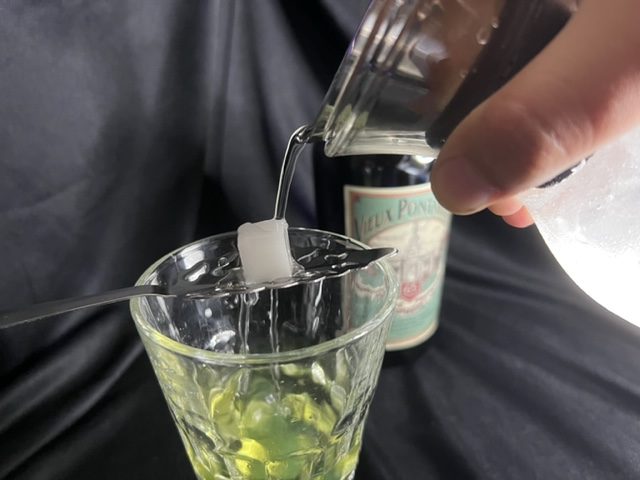
When it comes to absinthe, added sugars are a clear indication of poor quality.
Authentic absinthe should not contain any added sugars, as it is a distilled spirit that should be enjoyed for its complex herbal flavors and aromas.
However, some low-quality absinthes may contain added sugars to mask the harshness of the alcohol or to make it more palatable to those who are not used to drinking absinthe.
These types of absinthes are more properly a liqueur rather than a true absinthe.
If you see added sugars listed on the label of an absinthe bottle, it is a warning sign that the product may be of low quality.
It’s important to note that not all absinthes that contain sugars are necessarily bad. Some high-quality absinthes may use a small amount of sugar to balance out the bitterness of the herbs.
In fact, one of my favorite absinthes is made using distilled cane spirits!
The difference is understanding why the sugar is there in the first place. Is it to bring out certain flavors or, more commonly, to mask them?
However, in general, it’s best to avoid absinthes that contain added sugars if you’re looking for an authentic, high-quality absinthe experience.
Red Flag #6: No Louche
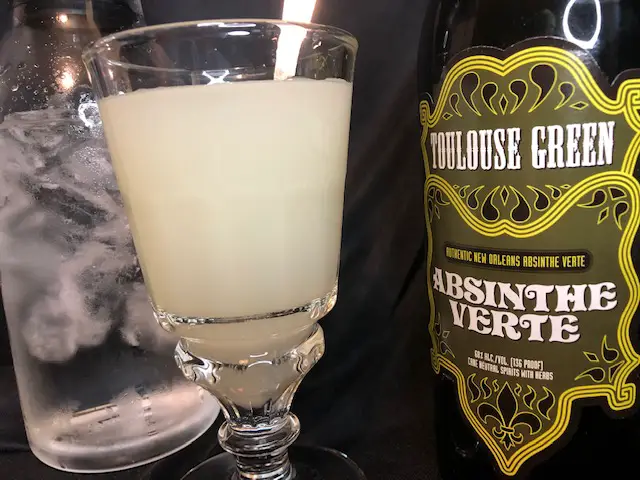
One of the most recognizable features of absinthe is its louche effect, where the drink turns cloudy and opaque when water is added. This effect is caused by the oils and herbal compounds in absinthe that are not soluble in water.
If you add water to your absinthe and it doesn’t louche, it could be a sign of low-quality absinthe. A proper louche is an indication of a well-made absinthe with a high concentration of essential oils.
Absinthes that don’t louche may have been improperly distilled or made with lower-quality ingredients. This is also a common sign in absinthe has been artificially colored or flavored.
However, it’s important to note that some absinthes are intentionally made not to louche heavily, such as certain clear absinthes or absinthes with a lower oil content. In these cases, the absence of a louche may not necessarily indicate low quality.
To ensure that you’re getting a high-quality absinthe, look for brands that use traditional distillation methods and high-quality ingredients.
Additionally, make sure to follow proper absinthe preparation techniques, such as using a proper absinthe spoon and slow-dripping ice-cold water to achieve a proper louche.
The absence of a louche can be a warning sign of low-quality absinthe, but it’s important to consider other factors as well.
Red Flag #7: Harsh Taste

One of the most obvious signs of low-quality absinthe is a harsh taste.
If your absinthe tastes overly bitter, astringent, or unpleasantly alcoholic, it may be a sign that the distillation process was rushed or poorly executed.
Low-quality absinthe may also have a harsh taste due to the use of artificial flavors or colorings.
These additives can give absinthe a chemical or synthetic taste that is far from the complex and nuanced flavors of genuine and high-quality absinthe.
Another reason for a harsh taste in absinthe is the use of low-quality herbs, especially when it comes to the wormwood that is used. The wormwood used in high-quality absinthe is carefully selected and harvested, while low-quality absinthe may use inferior wormwood or even wormwood substitutes.
If you’re experiencing a harsh taste in your absinthe, it’s important to pay attention to the other warning signs as well. A harsh taste can be an indication of other quality issues, such as a lack of complexity, poor mouthfeel, or a lack of the characteristic louche effect.
To avoid low-quality absinthe with a harsh taste, make sure to choose a reputable brand and look for absinthe made with high-quality ingredients.
Of course, you’ve also got my absinthe reviews to help you out too!
Remember that high-quality absinthe is a complex and nuanced spirit with a unique flavor profile, and a harsh taste is a clear indication that something is amiss.
Recommended: How to Taste Absinthe Like a Pro
Red Flag #8: Lack of Information

When it comes to absinthe, a general lack of information is a major red flag.
A quality absinthe should provide a detailed list of ingredients and the production process used to create it. If an absinthe does not provide this information, it is often a sign of poor quality absinthe.
The makers of high-quality absinthes take a great deal of pride in their product. Without fail, you can almost always find helpful and interesting information on their websites, social media, or on the bottles themselves.
It’s those who refuse to talk about what’s in their absinthe and how they make it that make my nose twitch a little bit…
Without knowing the ingredients and production process, it is very difficult to determine the quality of the absinthe. Additionally, absinthe that does not provide this information may contain undesirable additives or be made using subpar ingredients.
With that said, there are certainly some high-quality absinthe distillers that may not provide information about their production process because they do not want to reveal their secret recipe.
I can’t fault them for that.
However, this lack of transparency can be a potential warning sign that the producer is cutting corners or using low-quality ingredients.
Conclusion – Red Flags That An Absinthe Is Low Quality
It seems like every year we’re seeing new and interesting absinthes entering the market. As an avid absintheur since 2007, I’m absolutely loving this absinthe renaissance!
But the overall limited and murky absinthe market in those early days made it necessary to learn the signs of a good absinthe and, more importantly, the signs of a bad one.
Beyond my love of the Green Fairy, it was the frustration of spending hard-earned money on poorly made (or outright FAKE) absinthe that really fueled my obsession.
For better or worse, I became “that guy” at the store who would see people looking at one of these knock-off brands and feel compelled to intervene.
In fact, I still am (and admittedly have developed a little bit of a reputation at the stores near me as a result.)
But what can I say?
Every dollar you spend on garbage-tier absinthe only encourages the corner-cutters and charlatans while making it harder for the brilliant distillers who are producing genuinely amazing absinthe that you would enjoy much more!
My hope is that being able to spot these red flags will help you find amazing absinthe and fall even more in love with the TRUE Green Fairy!
